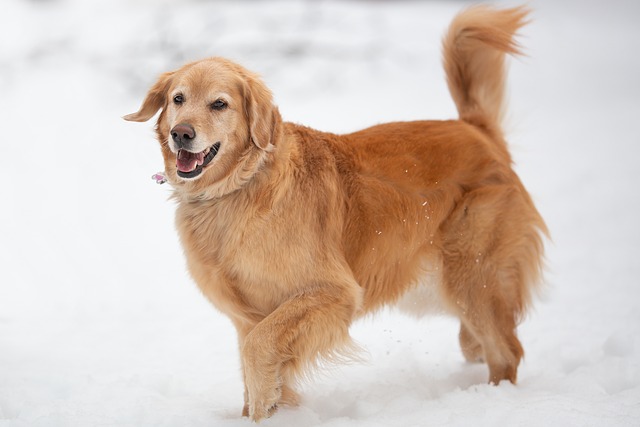
How can I tell if my dog's heatstroke is serious
Let’s be real: It’s a sticky August morning in Los Angeles, and you took your 2-year-old Golden Retriever, Max, for a walk a little later than usual
Watching your Golden Retriever bound through mud puddles or roll around in the grass is part of the joy of dog ownership. But that playful spirit often leaves them looking—and smelling—less than pristine. It’s tempting to think a weekly bath will keep them picture-perfect, but there’s more to consider than just cleanliness. Let’s break down what’s best for your fluffy friend’s coat and skin.
First off, Golden Retrievers have a double coat designed by nature to protect them. The outer layer repels water and dirt, while the soft undercoat insulates against cold. Frequent washing strips away the natural oils that keep this coat healthy. Think of it like over-washing your own hair—the more you strip the oils, the drier and more irritated the skin becomes. In many regions, responsible pet care guidelines emphasize preserving a dog’s natural defenses, and over-bathing goes against that principle.
However, once-a-week baths aren’t always off-limits. If your dog has rolled in something truly foul—like skunk spray or rotten food—immediate cleanup is crucial. In cases of skin conditions requiring medicated shampoos, your vet might recommend regular bathing as part of the treatment plan. Just make sure to follow their exact instructions; using prescription products without authorization violates animal welfare regulations in most places.
 When choosing a shampoo, read labels carefully. Skip anything labeled “for humans” or scented with strong perfumes—these can cause skin irritation. Look for pH-balanced, dog-specific formulas, especially those formulated for double-coated breeds. Avoid brands containing sulfates, which can dry out the skin, and consider natural ingredients like oatmeal for soothing sensitive skin.
When choosing a shampoo, read labels carefully. Skip anything labeled “for humans” or scented with strong perfumes—these can cause skin irritation. Look for pH-balanced, dog-specific formulas, especially those formulated for double-coated breeds. Avoid brands containing sulfates, which can dry out the skin, and consider natural ingredients like oatmeal for soothing sensitive skin.
The bathing process itself matters too. Use lukewarm water—never hot, as dogs have more sensitive skin than we do. Start by thoroughly wetting the coat, then apply shampoo in gentle, circular motions. Pay extra attention to dirty areas like paws, under the tail, and around the ears, but avoid getting water or soap in their eyes, ears, or mouth. Rinse until every trace of shampoo is gone; residue can lead to itching and rashes.
After the bath, towel dry your dog as much as possible before using a blow dryer on the lowest, coolest setting. Keep the dryer at least 6 inches away from their skin to prevent burns. Regular brushing while the coat is damp helps remove loose fur and distributes natural oils more evenly.
If you’re set on weekly baths, try diluting the shampoo more than usual or using a waterless “dry shampoo” spray on off-weeks. These products absorb excess oils and odors without stripping the coat. But always monitor your dog’s skin for signs of dryness, flaking, or redness—if these appear, cut back on bathing frequency immediately.
Ultimately, caring for your Golden Retriever’s coat is a balancing act. Listen to your dog’s body and consult your vet if you’re unsure. With the right approach, you can keep your furry friend clean, healthy, and ready for their next adventure—muddy paws and all.

Let’s be real: It’s a sticky August morning in Los Angeles, and you took your 2-year-old Golden Retriever, Max, for a walk a little later than usual

You're enjoying a summer afternoon at the park when you notice your dog has stopped panting and appears disoriented - their gums are bright red

Let’s paint the picture: You’re in your Denver apartment, watching your 4-year-old Boston Terrier, Ruby, plop down mid-play session with her favorite toy

Many dog owners notice their pets nails seem shorter after regular walks,but how much does this daily activity actually help?The answer depends on where you walk—concrete sidewalks or asphalt streets gently file nails as a dog's paws hit the ground

Most dog owners notice their pup scooting across the carpet at some point, but few connect it to impacted anal glands. These small sacs near a dog’s rectum secrete a scent for marking territory

Most vets agree that regular dog teeth cleaning is key to avoiding painful dental issues later. For healthy adult dogs, a professional cleaning at the vet’s office every 12 to 18 months usually works well.